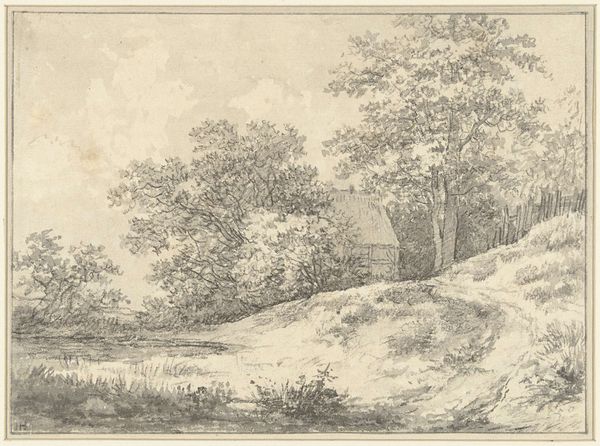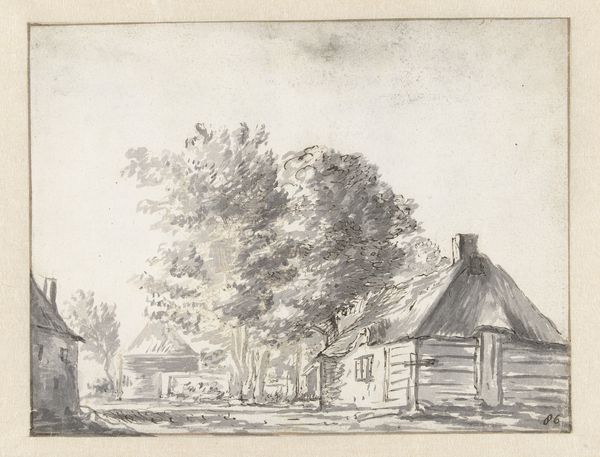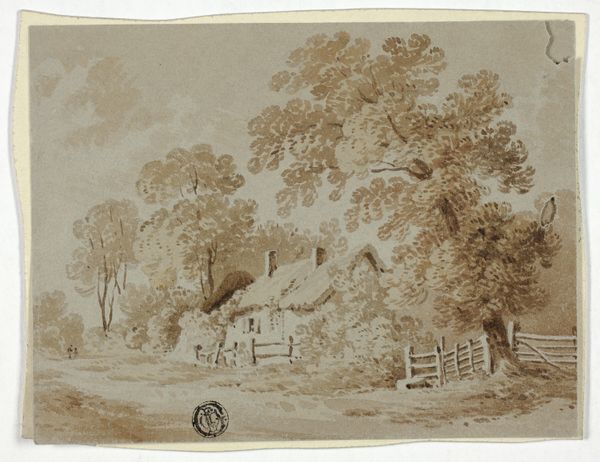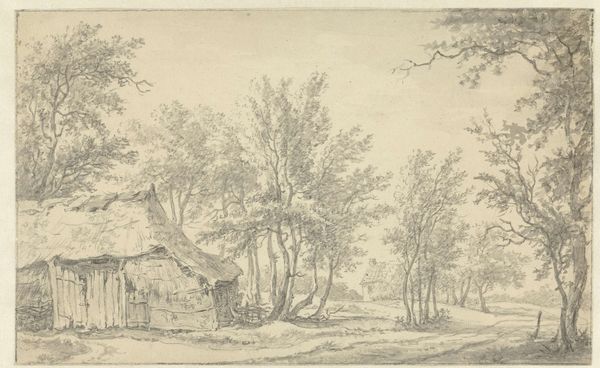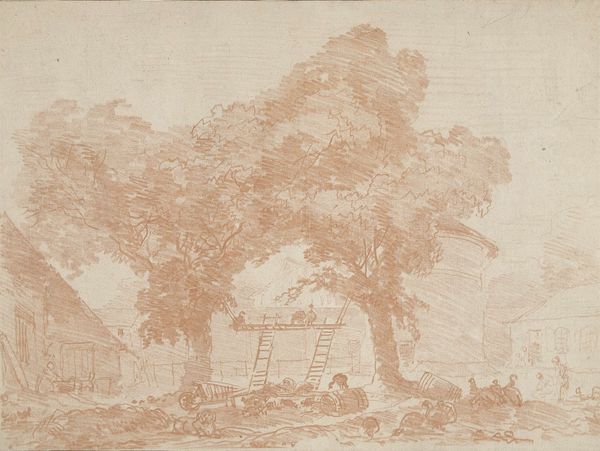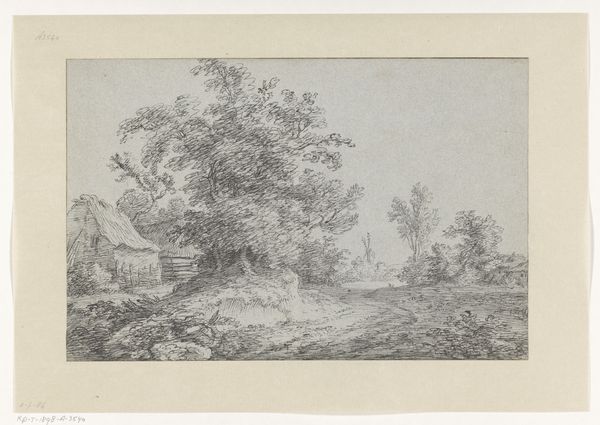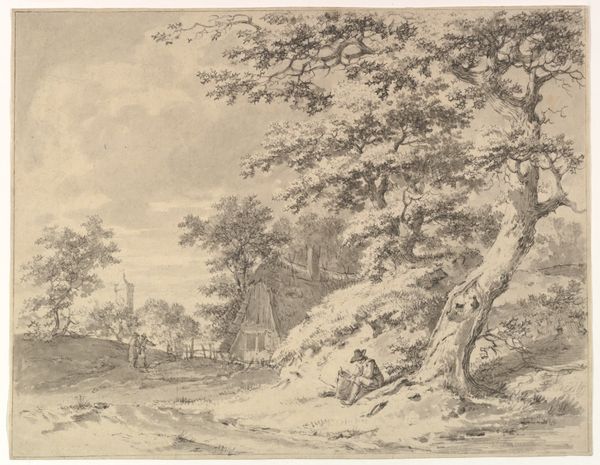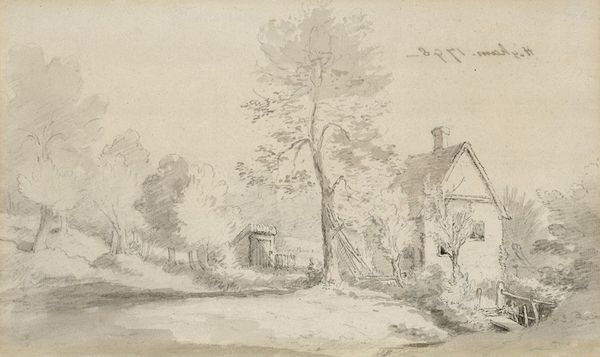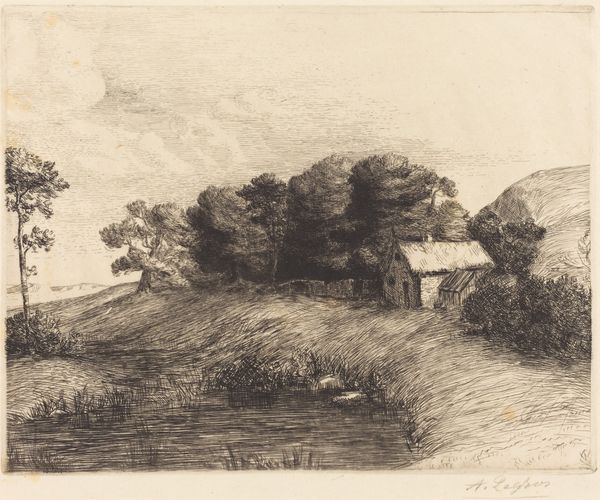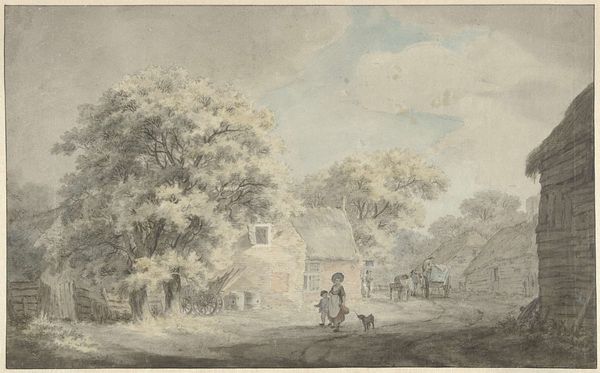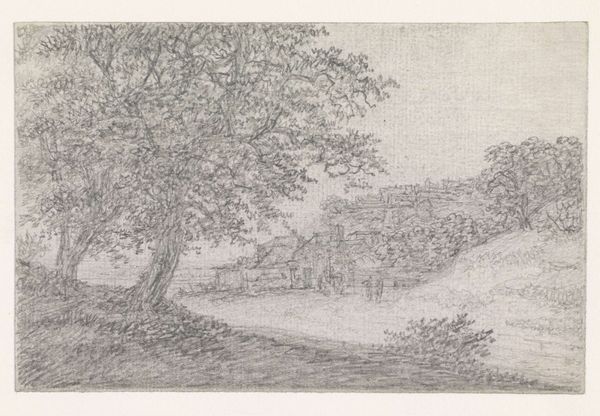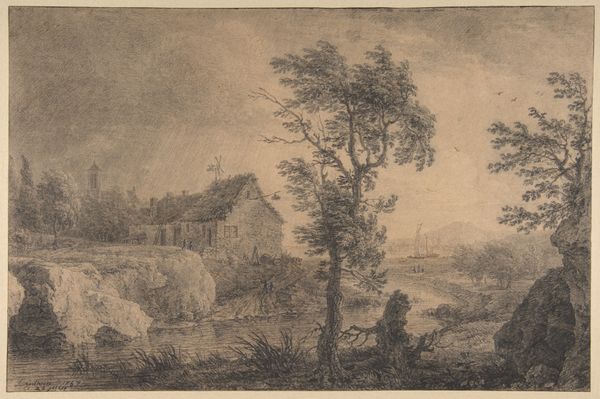
Landskab med en stor eg ved siden af bondehytter 1623 - 1635
0:00
0:00
drawing, ink
#
drawing
#
dutch-golden-age
#
landscape
#
ink
#
genre-painting
Dimensions: 193 mm (height) x 293 mm (width) (bladmaal)
Editor: This ink drawing, “Landscape with a Large Oak Next to Peasant Huts,” was created sometime between 1623 and 1635 by Pieter Dircksz Santvoort. There’s something almost dreamlike about this very ordinary scene. What can you tell me about it? Curator: It's evocative, isn’t it? Santvoort captures the Dutch landscape not just as scenery, but as a space imbued with social meaning. Consider the role of the large oak tree – it's a dominant, almost patriarchal figure presiding over these modest peasant dwellings. Editor: Patriarchal? I hadn't considered that. How so? Curator: In 17th-century Dutch society, land ownership and agriculture were deeply tied to socio-economic power structures. The large oak could symbolize the established order, the enduring power of the land-owning class. And the peasant huts? Editor: Maybe representing the labor that sustains that power? Curator: Precisely. They represent the people in this society, so their homes are smaller, perhaps fragile-looking next to the old oak tree. Also, how might this idyllic landscape obscure the realities of peasant life? Editor: I guess we don’t see the backbreaking work, or the poverty. The focus is on the peacefulness, the “ordinariness.” It’s like a curated version of reality. Curator: Exactly. By examining these representations, we can start to understand how art plays a role in shaping perceptions and potentially reinforcing societal hierarchies. What do you take away from looking at this landscape now? Editor: That a seemingly simple drawing of the countryside can speak volumes about the power dynamics of its time, and maybe even ours.
Comments
No comments
Be the first to comment and join the conversation on the ultimate creative platform.
